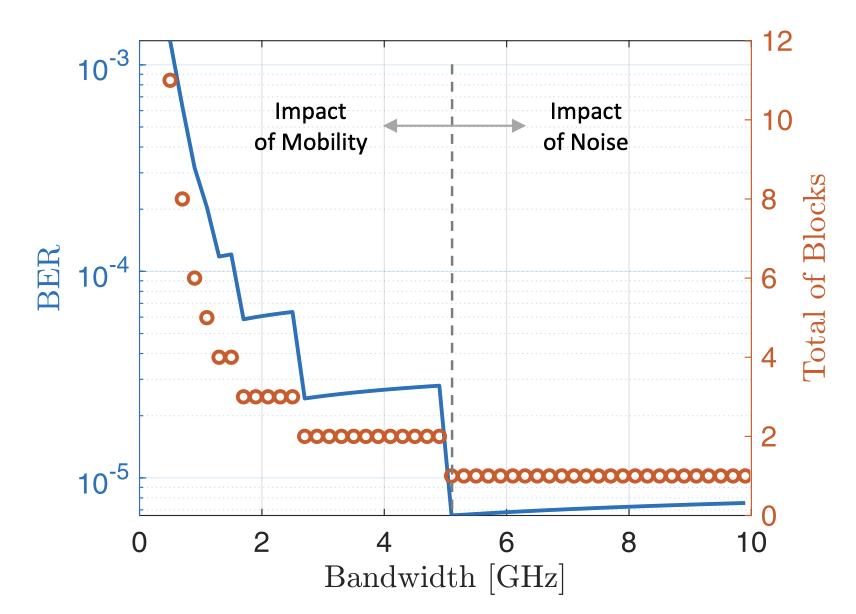Literature Database Entry
segata2015jerk
Michele Segata, Falko Dressler and Renato Lo Cigno, "Jerk Beaconing: A Dynamic Approach to Platooning," Proceedings of 7th IEEE Vehicular Networking Conference (VNC 2015), Kyoto, Japan, December 2015, pp. 135–142.
Abstract
Automated car following, or platooning, is a promising Inter-Vehicle Communication (IVC) application which has the potential of reducing traffic jams, improving safety, and decreasing fuel consumption by forming groups of vehicles which autonomously follow a common leader. The application works by sharing vehicles' data through high frequency periodic beaconing which, due to channel congestion, might not work in highly dense scenarios. To address this issue, in this paper we propose a dynamic approach called Jerk Beaconing which exploits vehicle dynamics to share data only when needed. The results, compared to a commonly assumed 10Hz beaconing, show huge benefits in term of network resource saving. Moreover, our approach outperforms static beaconing in terms of safety as well, as it is able to keep inter-vehicle distance closer to the desired gap even in highly demanding scenarios.
Quick access
Original Version ![]() (at publishers web site)
(at publishers web site)
Authors' Version ![]() (PDF on this web site)
(PDF on this web site)
BibTeX ![]()
Contact
Michele Segata
Falko Dressler
Renato Lo Cigno
BibTeX reference
@inproceedings{segata2015jerk,
author = {Segata, Michele and Dressler, Falko and Lo Cigno, Renato},
doi = {10.1109/VNC.2015.7385560},
title = {{Jerk Beaconing: A Dynamic Approach to Platooning}},
pages = {135--142},
publisher = {IEEE},
issn = {2157-9865},
isbn = {978-1-4673-9411-6},
address = {Kyoto, Japan},
booktitle = {7th IEEE Vehicular Networking Conference (VNC 2015)},
month = {12},
year = {2015},
}
Copyright notice
Links to final or draft versions of papers are presented here to ensure timely dissemination of scholarly and technical work. Copyright and all rights therein are retained by authors or by other copyright holders. All persons copying this information are expected to adhere to the terms and constraints invoked by each author's copyright. In most cases, these works may not be reposted or distributed for commercial purposes without the explicit permission of the copyright holder.
The following applies to all papers listed above that have IEEE copyrights: Personal use of this material is permitted. However, permission to reprint/republish this material for advertising or promotional purposes or for creating new collective works for resale or redistribution to servers or lists, or to reuse any copyrighted component of this work in other works must be obtained from the IEEE.
The following applies to all papers listed above that are in submission to IEEE conference/workshop proceedings or journals: This work has been submitted to the IEEE for possible publication. Copyright may be transferred without notice, after which this version may no longer be accessible.
The following applies to all papers listed above that have ACM copyrights: ACM COPYRIGHT NOTICE. Permission to make digital or hard copies of part or all of this work for personal or classroom use is granted without fee provided that copies are not made or distributed for profit or commercial advantage and that copies bear this notice and the full citation on the first page. Copyrights for components of this work owned by others than ACM must be honored. Abstracting with credit is permitted. To copy otherwise, to republish, to post on servers, or to redistribute to lists, requires prior specific permission and/or a fee. Request permissions from Publications Dept., ACM, Inc., fax +1 (212) 869-0481, or permissions@acm.org.
The following applies to all SpringerLink papers listed above that have Springer Science+Business Media copyrights: The original publication is available at www.springerlink.com.
This page was automatically generated using BibDB and bib2web.

